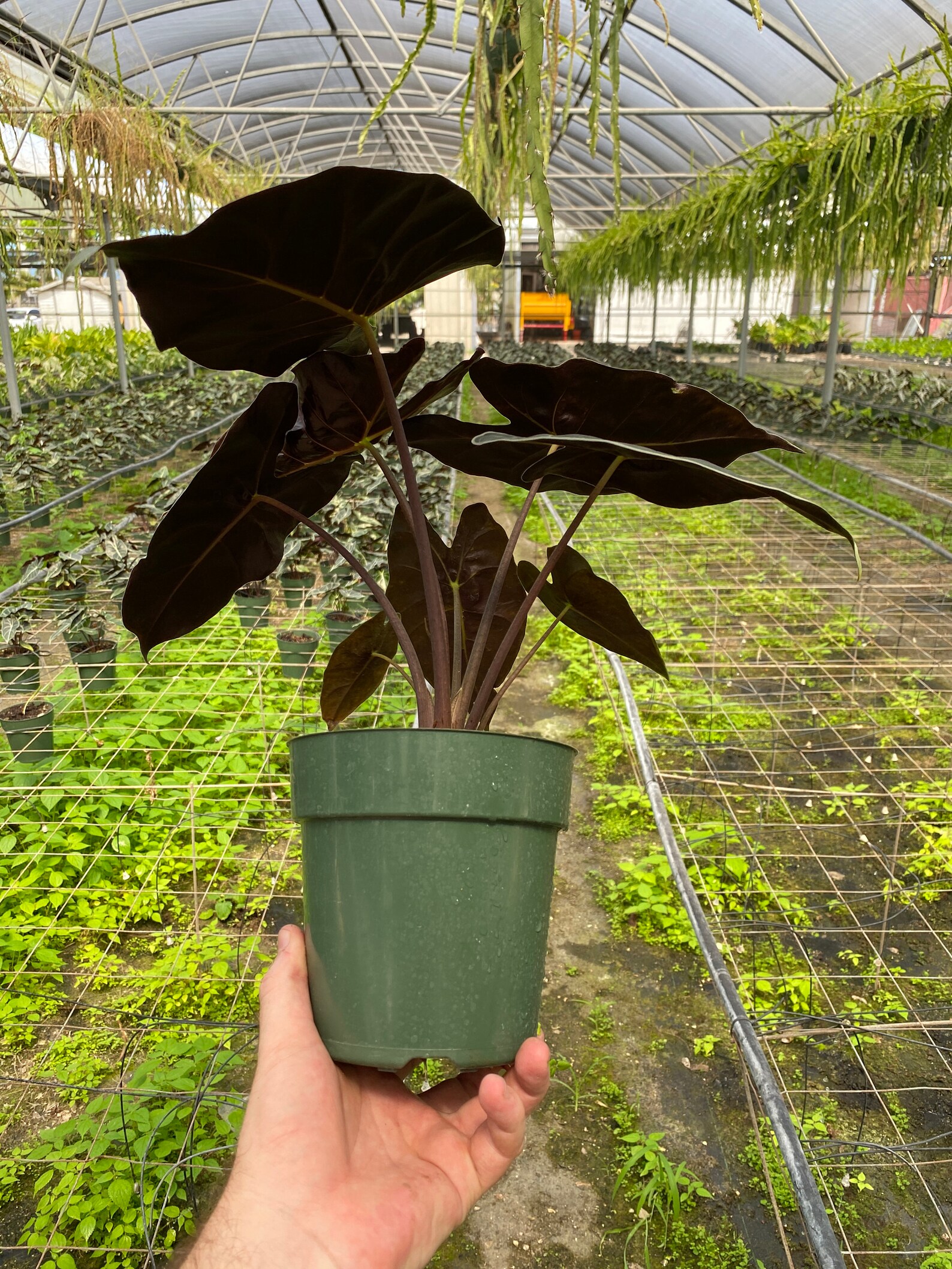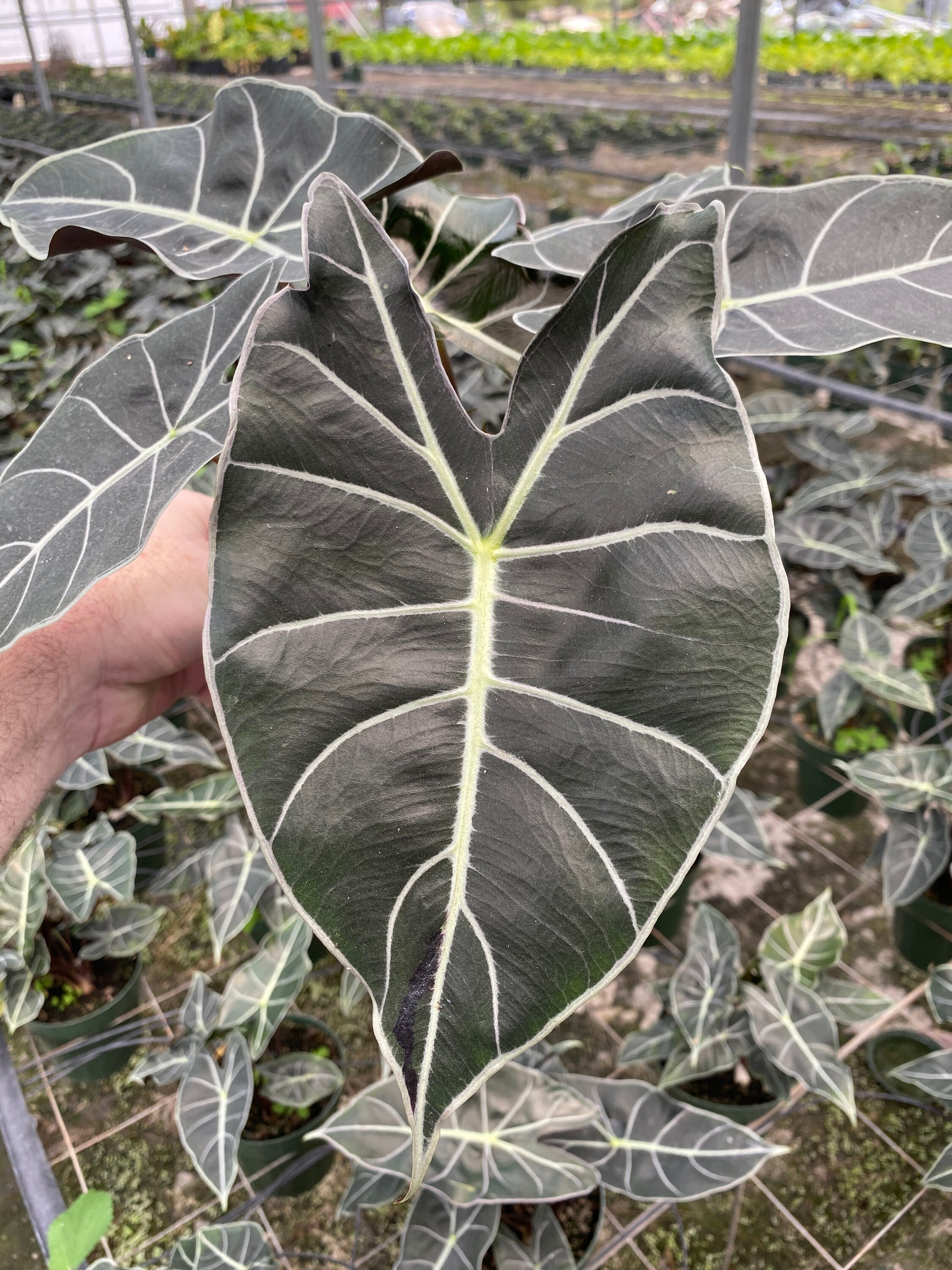Alocasia Dragon's Tooth
If you're a plant lover, chances are you've heard of the alocasia dragon's tooth. This exotic plant has become increasingly popular in recent years, and for good reason. Its unique foliage and low maintenance needs make it a great addition to any collection. But what exactly is alocasia dragon's tooth, and why should you consider adding it to your own plant family? Let's dig in and find out.
The Pain Points of Alocasia Dragon's Tooth
Like any plant, alocasia dragon's tooth has its own quirks and challenges. One of the most common pain points of this plant is its sensitivity to overwatering. It is important to allow the soil to dry out between waterings, as too much moisture can lead to root rot and other issues. Additionally, this plant prefers bright, indirect light and may struggle in low-light conditions. But with the right care, these challenges can be easily managed.
The Target of Alocasia Dragon's Tooth
Alocasia dragon's tooth is an ideal plant for those who love unique foliage. Its large, glossy leaves feature bold veins and intricate patterns that are sure to catch the eye. The plant's compact size also makes it a great choice for small spaces, such as apartments or dorm rooms. Its low maintenance needs also make it a great option for those who are new to plant care or have a busy lifestyle.
Main Points about Alocasia Dragon's Tooth
In summary, alocasia dragon's tooth is a relatively low maintenance plant with unique foliage that is sure to impress. While it may require a bit of extra attention when it comes to watering and lighting, its beauty and adaptability more than make up for it. For those in search of a standout addition to their plant collection, alocasia dragon's tooth is definitely worth considering.
My Personal Experience with Alocasia Dragon's Tooth
As an avid plant lover, I am always on the lookout for new and interesting additions to my own collection. When I first came across alocasia dragon's tooth, I was immediately drawn to its bold and unique leaves. After doing some research on its care needs, I decided to take the plunge and add one to my own plant family.
I have to say, I was not disappointed. My alocasia dragon's tooth quickly became one of my favorite plants, with its glossy leaves adding a touch of exotic beauty to my home. I found that by allowing the soil to dry out between waterings and ensuring it was placed in a bright spot, the plant thrived without much additional effort on my part.
If you're considering adding alocasia dragon's tooth to your own collection, my advice would be to start small and gradually work your way up. While this plant is certainly a statement piece, it is important to ensure you can provide it with the care it needs to truly thrive.
More about Alocasia Dragon's Tooth and Related Keywords
Alocasia dragon's tooth is part of the alocasia family, which includes a wide variety of plants with similarly unique foliage. These plants are native to Southeast Asia but have become popular all across the globe in recent years. While many people may be turned off by their perceived difficulty of care, most alocasia plants are relatively easy to care for with the right approach.
When it comes to alocasia dragon's tooth specifically, it is important to note that while it may be more sensitive to overwatering than some plants, it is not overly fussy. It prefers bright, indirect light and may benefit from occasional misting to increase humidity, but otherwise can thrive in a variety of conditions.
The Benefits of Alocasia Dragon's Tooth
In addition to its stunning foliage, alocasia dragon's tooth also offers a number of benefits to plant owners. Its low maintenance needs make it a great option for busy individuals who do not have the time or energy for finicky plants. Its small size and adaptability also make it a great choice for those living in small spaces, such as apartments or dorm rooms.
Question and Answer
What is the best way to care for an alocasia dragon's tooth?
The best way to care for an alocasia dragon's tooth is to allow the soil to dry out between waterings, and to ensure it is placed in a bright spot with indirect light. It may benefit from occasional misting to increase humidity.
What is the best soil for an alocasia dragon's tooth?
Alocasia dragon's tooth prefers well-draining soil that is rich in organic matter, such as a mixture of peat moss and perlite.
How often should I fertilize my alocasia dragon's tooth?
Alocasia dragon's tooth should be fertilized every two to four weeks during the growing season, using a balanced fertilizer diluted to half strength.
How can I propagate my alocasia dragon's tooth?
Alocasia dragon's tooth can be propagated through division, by carefully separating the plant into smaller sections and replanting them in their own pots.
Conclusion of Alocasia Dragon's Tooth
Overall, alocasia dragon's tooth is a stunning and unique plant with a lot to offer. While it may require a bit of extra attention when it comes to care, its beauty and adaptability make it a great choice for plant lovers of all levels of experience. With the right approach, alocasia dragon's tooth is sure to become a standout addition to any collection.
Gallery
Alocasia Longiloba Dragons Tooth Large Plants In | Etsy

Photo Credit by: bing.com / alocasia longiloba
Alocasia Longiloba Dragons Tooth Large Plants In | Etsy

Photo Credit by: bing.com / alocasia longiloba
Alocasia Longiloba Dragons Tooth Large Plants In | Etsy

Photo Credit by: bing.com / longiloba alocasia tooth
Houseplants & Tropicals Archives | Page 2 Of 5 | Alsip Home & Nursery

Photo Credit by: bing.com / alocasia longiloba houseplants
Alocasia Longiloba ‘Dragons Tooth’ | EdenCPs

Photo Credit by: bing.com / alocasia longiloba edencps